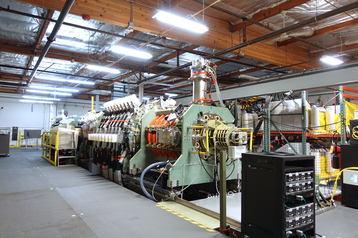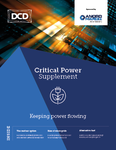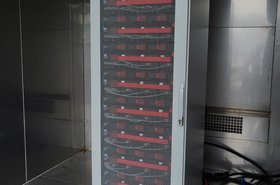Today’s nuclear power all comes from nuclear fission, in which the nuclei of heavy atoms are split, but science has a dream to one day create power from nuclear fusion, which combines lighter atoms such as hydrogen and helium, in the same reaction that powers the Sun.
Fusion has been frustratingly out of reach for 80 years - understandably, as it requires a plasma (ionized gas) maintained at pressures and temperatures as high as those of the Sun.
A recent announcement raised the prospect of data centers powered by fusion - how realistic is this?
False dawns of fusion
The history has been one of repeated false dawns, where a “breakthrough” turns out to be just a small incremental step towards eventual fusion power.
For instance, in December, the Lawrence Livermore National Laboratory (LLNL) announced it had achieved “ignition,” by creating a fusion reaction that produced more energy than the laser energy used to drive it.
The experiment focused 192 laser beams on a fuel pellet in a target chamber, delivering more than 2 million Joules of ultraviolet energy, creating a plasma which then emitted more than 3 million Joules of energy.
This sounds like a major step, but the reaction pellet was tiny, and 2M Joules is in fact roughly the same amount of energy as 0.5 kiloWatt hours, or about five cents' worth of electrical energy.
Also, the energy bill broke even in scientific terms, not in commercial terms. The lasers used are very inefficient, so they consumed 300MJ of energy from the grid, to deliver the 2MJ to the reaction pellet.
But this year, prospects seemed to brighten, when Microsoft brought fusion power into the practical world of electricity contracts, with a deal that appears to promise the company will be using actual fusion power in 2028.
This date is sooner than many new conventional nuclear power stations covered in our previous article will arrive, and has led to considerable doubt.
But Microsoft has signed an apparent power supply deal, in the form of a PPA with Helion Energy, a startup that claims its novel approach will deliver 50MW of fusion power to Microsoft by 2028.
Helion who?
Helion began as a project funded with a few million dollars of NASA money, but got more than $500 million of billionaire venture capital funding, much of it from Sam Altman, best-known for Y Combinator and OpenAI.
There are other billionaire-funded fusion startups out there, including TAE, which had investment from the late Microsoft founder Paul Allen, and MIT spinout Commonwealth Fusion Systems is backed by former Microsoft CEO Bill Gates.
Most fusion approaches use the two hydrogen isotopes deuterium and tritium, which produce a lot of potentially-harmful neutrons when they fuse. Helion plans to react deuterium with the helium-3 isotope, in a cleaner fusion reaction.
Sadly, this reaction requires higher pressures and temperatures than the best fusion experiments so far (and far beyond what Helion has demonstrated). And Helion hasn’t explained how it can mix helium-3 and deuterium, and prevent the deuterium ions from fusing with each other, in the reaction it is trying to avoid.
The company also has an untested system to extract electricity from the hot plasma, using electromagnetic induction, rather than the cumbersome steam generators used by most other fusion schemes.
But finally, if Helion successfully demonstrates fusion, it will have to spend several years getting approvals, before it can deliver any power to Microsoft.
So Microsoft’s fusion PPA could be a brave bid to support a potential winner, or a cynical effort to gather some green kudos without any actual risk. As the details of the PPA are being kept a closely-guarded secret, we can’t be sure which.
Most likely Helion has a get-out clause - and the rest of us should get on with more tested approaches to carbon-free energy.





